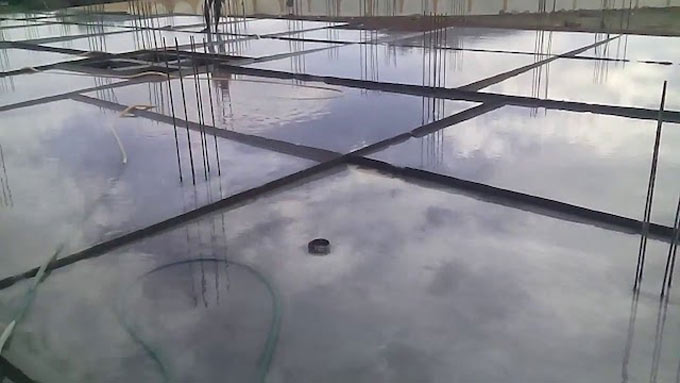
Some useful methods for concrete curing
Concrete curing stands for the method of retaining the concrete damp or moist and warm once the preliminary setting of concrete or elimination of formwork or shuttering are done. If the concrete is cured properly, the correct moisture content and suitable temperature is kept inside the concrete in order that hydration of cement may persist unless the required properties of concrete are obtained. So, curing of concrete should be carried on for a feasible period of time to attain its required strength and stability.
Based on the size and type of the work, various concrete curing methods exist. Given below, the details of three important concrete curing methods through which concrete is maintained moist and humid or retained at a suitable temperature.
01. Water Curing:
It is a most common method of curing since it fulfills all the requirements of curing. These methods keep the existence of moisture in the concrete throughout the initial hardening period.
Water curing is performed in the following ways:
? Immersion
? Ponding
? Spraying or fogging
02. Membrane Curing (Wet Covering):
These methods stop the loss of mixing water from the surface of the concrete. Sometime concreting is done in a distant place where the scarcity of water issue is severe. A large amount of water essential for water curing is not always possible for monetary purpose.
So, Membrane curing is suitable in the following forms:
? Plastic sheeting
? Curing compounds
03. Application of Heat (Steam Curing):
These methods quicken strength gain by providing heat and extra moisture to the concrete. When concrete has to undergo extreme temperature, it quickens the hydration process and thus leads to rapid formation of strength. Materials which adopt this hardening method, be likely to cure more consistently and much more faster as compared to other processes.
Under steam curing, objects to be cured are arranged inside a chamber or room. An operator fixes the temperature and humidity level through a control panel. The heat and moisture enters in the materials fast, consequently hydrate the concrete completely and harden them. A fraction of time is required for steam curing and it promptly reinforces the products in order that they can be applied right away.
The exposure of concrete to a greater temperature is performed in the following way:
? Steam curing at ordinary pressure.
? Steam curing at high pressure.
? Curing by Infra-red radiation.
? Electrical Curing
Concrete Curing methods differ with various concrete structures or members. All concrete curing methods are not suitable for all type of concrete structures. Opt for the perfect concrete curing method to attain designed strength.


